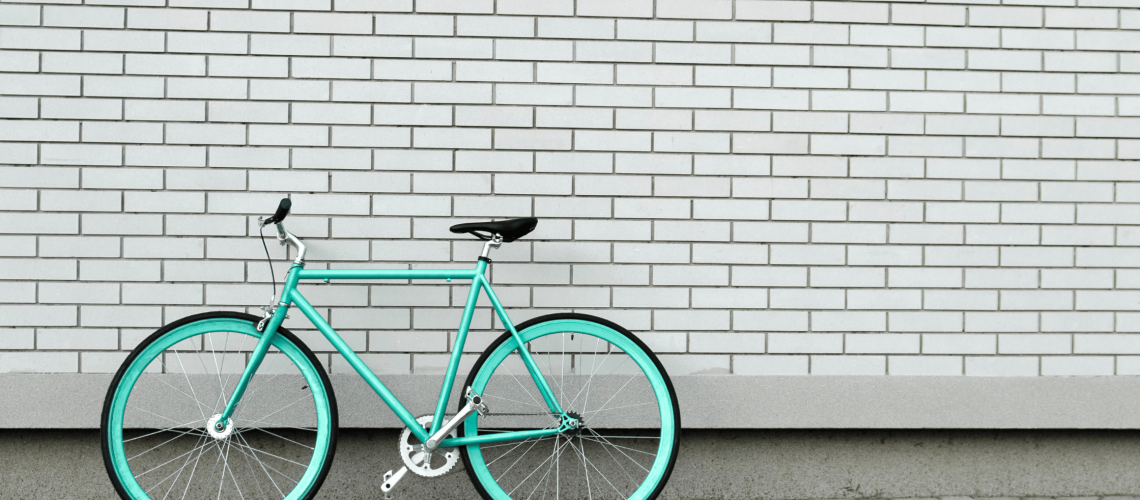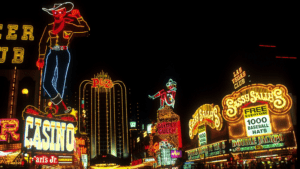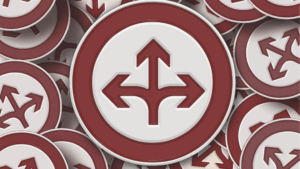
Anyone else out there a cyclist? How about bad joints? If both of those are a “yes,” you might be my people.
I broke my ankle several times as a kid. Military docs set it wrong and I eventually ended up duck footed and knock kneed. Not the best combo for any sort of physical activity.
Yet, in my 40’s I became an athlete. I still trip over that word a bit. Especially now that my competitions are in my basement.
I spend my cycling time on a Peloton – “the bike that goes nowhere.” I’ve had it for about 5 years now, long before the pandemic created a home gym explosion. That means it’s been with me through fitness ups and downs, life changes, and several moves.
When I had a road bike, my funky joint issues meant I had to get a professional fit to ride comfortably. It never occurred to me do to the same with the Peloton.
After some new joint news from my doctors over the summer, it was time to make sure the bike was working for me and not against me. It was time for a bike fit.
Fit makes all the difference
I found a professional cyclist that did Peloton fits near my home and scheduled him to come out. We spent a few hours together and what I learned horrified me.
My seat was completely off-center and lopsided. As a result, my right leg was compensating by hyper extending. The angle of my knees was off by more than 10 degrees between my left and right legs. For the uninitiated, this is NOT good.
All in all, I was a hot mess on the bike, swaying every which way. And I had no idea.
We get accustomed to what we know
What does this have to do with anything? I had no idea what I was doing was bad for me. The bike had been off for years and I had no clue.
Our bodies – and minds – find ways to help us cope and adjust to sub-optimal conditions. We will compensate for bad fit, culture, bosses, relationships, and more. We find ways to make it work, to the point where we might not even notice.
It’s not until something changes that we may recognize the mismatch between what we need and what we have. It may take an outside observer pointing out what’s wrong. Or changing our current conditions so we can reflect on what’s working better now.
A bad fit seems normal if it’s what we know. So what’s the harm?
1. Risk of injury
Every time I got on the bike, I was risking injury. The compensating that I was doing was detrimental for my long-term physical health.
When we contort ourselves to fit in an environment, whether at work or home, we can do very real physical, mental, and emotional damage.
Each time we find ourselves adjusting to fit – an environment, relationship, company culture, etc – we are putting stress on our minds and bodies. For example, stress can trigger cortisol, which has real physical health impacts over time.
2. Poor performance
When we are adjusting to fit in, we aren’t performing at our best. We can’t – we’re too busy compensating for the conditions.
It is only when we’re in conditions that work for us, rather than against us, that we can perform optimally.
Once the bike was adjusted, I found myself able to cycle at higher speeds with more resistance. What felt difficult before, suddenly felt easier. I was the same, but I was no longer having to adjust to poor conditions and could have higher output with the same effort.
3. Even good change is difficult
When the fit was over, the guy warned me that it would feel strange and to give it time. Turns out we get used to the bad stuff to the point where a good fit can feel wrong.
When we finally do find a better fit, we have to resist rejecting it. The old stuff is comfortable and known. Even if it wasn’t working for us, we know what to do.
We have to be willing to experience the initial discomfort of something better. To learn new healthy ways to operate and unlearn the bad fit we leave behind. It might feel awkward at first. Eventually, it will feel routine and we’ll see the performance improvements a better environment offers.
Find your fit
Is where you are a good fit for you? How would you know?
If we find ourselves talking regularly about adjustments and compromises we make to fit in, our current environment or role might not be right for us. Physical ailments are another consideration. Looking back, every major health concern I’ve had has been aligned a major work or life mismatch.
Sometimes, it’s hard for us to see. We are caught up in our lives every waking moment. We’re (usually) vested in where we are and how we got here. Consider asking a trusted friend or colleague for help. Others can often see what we aren’t yet ready or able to see.
If we find out there’s not a fit, it’s likely time for some sort of change. However, it may be necessary to stay where we are for financial or other reasons. In that case, knowing how we’re adjusting and the impact of those adjustments is important. Consider what support might be needed to help alleviate mental, physical, and emotional risks.
No matter where we are in our lives or careers, it’s worth stepping back with a critical eye to evaluate fit. What’s working, what’s not, and what can we adjust to make this the smoothest ride we can?








